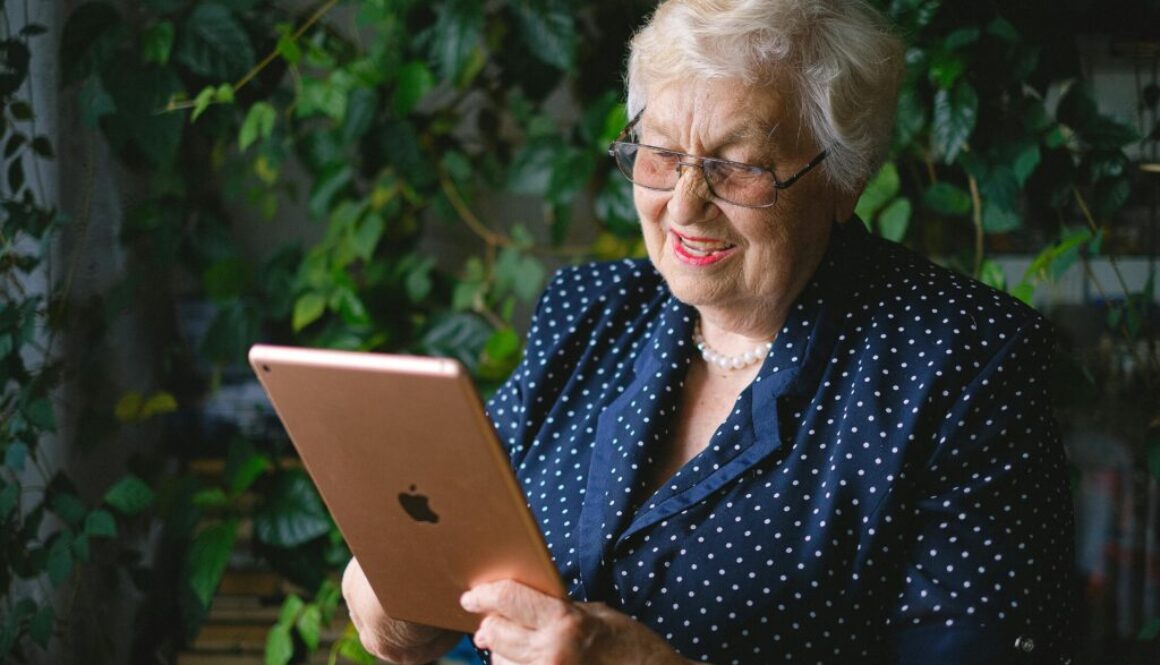Empowering Independence: Strategies for Aging in Place
Introduction
Empowering independence for older adults is a vital aspect of modern aging. More than ever, seniors express a strong desire to remain in their own homes and communities, a concept known as aging in place. This comprehensive guide will explore strategies for aging in place, including home modifications, the role of technology, building a support network, maintaining physical and mental well-being, financial planning, and embracing change with resilience. By addressing these critical areas, older adults can maintain their independence and enjoy a higher quality of life.
Understanding Aging in Place
What Is Aging in Place?
Aging in place refers to the ability of older adults to live in their own homes and communities safely, independently, and comfortably, regardless of age, income, or ability level. This approach prioritizes the modification of living environments to accommodate the changing needs of aging individuals. According to the AARP, nearly 90% of seniors prefer to stay in their homes as they age, making this a crucial aspect of elder care planning.
Why Independence Matters
Maintaining independence is essential for the mental, emotional, and physical well-being of older adults. It provides a sense of control, boosts self-esteem, and contributes to overall life satisfaction. Independence allows seniors to continue their daily routines and activities, which is crucial for a fulfilling life. Research indicates that those who can maintain their independence are generally happier and healthier, facing fewer mental health issues such as depression and anxiety.
Creating a Safe and Supportive Home Environment
Home Modifications for Safety and Accessibility
Making home modifications is a fundamental strategy for aging in place. These changes can prevent accidents and ensure that the home remains a safe environment.
Installing Grab Bars and Handrails
Grab bars in the bathroom and handrails along staircases can significantly reduce the risk of falls. These installations provide necessary support and stability, making it easier to navigate the home.
Improving Lighting
Proper lighting is critical for safety. Consider adding nightlights in hallways and motion-sensor lights in frequently used areas. Bright, well-placed lighting helps prevent trips and falls, especially in key areas like staircases and bathrooms.
Removing Tripping Hazards
Clutter, loose rugs, and cords can be dangerous tripping hazards. Clear pathways and secure any loose items to ensure safe movement throughout the home. Using non-slip mats and removing unnecessary furniture can create clear walking paths and reduce the risk of accidents.
Accessible Kitchen and Bathroom Features
Installing lever handles on doors and faucets, raised toilet seats, and pull-out shelves in cabinets can make daily tasks easier and safer. These modifications allow older adults to perform tasks independently without straining or risking injury, thereby empowering their independence.
Embrace Technology as Your Ally
Modern technology offers numerous solutions to enhance safety and independence for older adults. These innovations can help monitor health, provide assistance in emergencies, and simplify daily tasks.
Medical Alert Systems
Medical alert systems are devices that can summon help in an emergency. Options include wearable pendants and wristbands that can detect falls and send alerts to emergency contacts or services. Popular choices include Life Alert and Philips Lifeline.
Smart Home Devices
Smart home devices such as voice-activated assistants (e.g., Amazon Alexa, Google Home) can control lights, thermostats, and locks. These devices make it easier to manage household functions without physical strain. Smart locks and video doorbells add an extra layer of security, allowing older adults to monitor and control access to their homes.
Health Monitoring Apps
Health monitoring apps track vital signs, medication schedules, and appointments. These apps help manage health conditions effectively and ensure that important health metrics are consistently monitored. Examples include Apple Health and MyFitnessPal, which provide comprehensive health tracking and reminders.
Communication Tools
Video calls and messaging apps (e.g., Skype, WhatsApp) help older adults stay connected with family and friends, reducing feelings of isolation. These tools are vital for maintaining social connections, especially for those who live alone, and they provide an easy way to check in with loved ones regularly.
Building a Support Network
The Role of Family and Friends
A robust support network is essential for aging in place successfully. Family and friends can provide emotional support, assist with daily tasks, and monitor health.
Family Support
Family members can help with transportation, shopping, and household chores. They can also provide companionship and emotional support, which is crucial for mental health. Regular visits and check-ins ensure that older adults feel valued and cared for.
Staying Connected with Friends
Maintaining social connections is vital for mental health. Encourage regular meet-ups or virtual gatherings. Social clubs, community centers, and religious groups offer opportunities for social engagement and activities, helping to combat loneliness and isolation.
Professional Care Services
Professional services can fill the gaps where family and friends cannot. These services ensure that older adults receive the care they need while maintaining their independence.
Home Health Aides
Home health aides are trained professionals who can assist with personal care, housekeeping, and meal preparation. They offer support with daily activities, allowing older adults to stay in their homes. This personal care ensures that seniors can maintain their independence while receiving necessary help.
Visiting Nurses
Visiting nurses provide medical care and monitor health conditions. They can administer medications, manage chronic conditions, and offer health education. This service ensures that medical needs are met without frequent hospital visits, providing peace of mind and continuous care.
Geriatric Care Managers
Geriatric care managers coordinate care, manage services, and act as advocates for older adults. They develop care plans, connect clients with resources, and monitor their well-being, providing comprehensive support and ensuring that all aspects of an older adult’s care are managed effectively.
Prioritizing Physical and Mental Well-being
Healthy Lifestyle Choices
Maintaining physical health is essential for aging in place. A healthy lifestyle includes a balanced diet and regular exercise.
Balanced Diet and Nutrition
A diet rich in fruits, vegetables, lean proteins, and whole grains can improve health and energy levels. Nutrient-dense foods support bodily functions and prevent diseases. Meal planning and nutritional counseling can help create a balanced diet, ensuring that seniors get the necessary nutrients for optimal health.
Regular Exercise Routines
Activities such as walking, swimming, or yoga can enhance strength, balance, and flexibility. Exercise helps maintain mobility and reduces the risk of chronic diseases. Senior fitness programs and community exercise classes offer structured and safe environments for physical activity, promoting both physical and mental health.
Mental Stimulation
Keeping the mind active is just as important as physical health. Mental stimulation can prevent cognitive decline and improve the quality of life.
Engaging Hobbies
Activities like reading, puzzles, or crafts can keep the mind sharp. Creative hobbies such as painting, knitting, or gardening provide both mental and emotional benefits, helping seniors to stay engaged and motivated.
Social Activities
Joining clubs or groups provides both social interaction and mental stimulation. Book clubs, bridge games, and community theater are excellent ways to stay engaged and connected, offering opportunities for learning and socializing.
Cognitive Training Programs
Programs designed to improve memory, attention, and problem-solving skills can be beneficial. Brain games, memory exercises, and online courses offer opportunities for cognitive enhancement, helping to keep the mind active and healthy.
Financial Planning for the Long Term
Budgeting for the Future
Financial stability is crucial for long-term independence. Proper budgeting ensures that resources are available to cover living expenses and unexpected costs.
Managing Retirement Funds
Ensure that retirement savings are sufficient to cover living expenses and unforeseen costs. Regularly review investments and adjust portfolios to meet financial goals. Consulting a financial advisor can provide personalized strategies to ensure financial security.
Planning for Healthcare Costs
Allocate funds for medical expenses, including insurance premiums, medications, and potential home modifications. Health savings accounts (HSAs) and long-term care insurance can provide financial security, helping to cover the high costs of healthcare.
Government Assistance Programs
Various programs can provide financial support and services, easing the burden of healthcare and living expenses.
Medicare and Medicaid
Medicare and Medicaid can help cover healthcare costs. Medicare offers coverage for hospital stays, medical visits, and some home health services, while Medicaid provides additional support for those with low income. Understanding the benefits and eligibility requirements of these programs is crucial for effective financial planning.
Social Security Benefits
Ensure you are maximizing your Social Security benefits. Understanding eligibility, timing your application, and exploring spousal benefits can optimize your income. Consulting with a Social Security expert can help navigate the complexities and maximize benefits.
Local and State Resources
Look for additional programs that offer assistance with housing, transportation, and other needs. Area Agencies on Aging (AAA) provide resources and services tailored to seniors, helping to connect them with local support and benefits.
Embrace Change with Resilience
Adapting to New Circumstances
Aging inevitably brings change, and adapting with resilience is key. Embracing change with a positive mindset can improve overall well-being.
Developing a Positive Mindset
Focus on what can be done rather than limitations. Positive thinking, gratitude practices, and mindfulness can enhance mental health and adaptability, helping seniors to face challenges with confidence and optimism.
Coping with Loss and Grief
Seek support from friends, family, or counselors to navigate emotional challenges. Grief support groups, therapy, and spiritual guidance can provide comfort and understanding, helping to cope with the emotional aspects of aging.
Building Emotional Resilience
Engage in activities that boost mood and reduce stress, such as mindfulness and meditation. Stress management techniques, deep breathing exercises, and mindfulness meditation can build resilience and improve emotional well-being, helping seniors to stay mentally and emotionally strong.
Conclusion
Empowering independence: Strategies for aging in place is a realistic and desirable goal for many older adults. By implementing these strategies, you can create a safe, supportive, and independent living environment. Embrace the changes with resilience, stay connected with your support network, and make health and well-being a priority. Empowering independence is about planning, adapting, and making informed choices to ensure a fulfilling and autonomous life as you age.
By focusing on these strategies, you can ensure that you or your loved ones can enjoy the benefits of aging in place, living a life that is both independent and enriched. The comprehensive approach to empowering independence includes practical home modifications, embracing technology, building a robust support network, maintaining physical and mental health, and planning for financial stability. Each of these elements plays a crucial role in creating an environment where older adults can thrive and continue to live fulfilling, independent lives.

